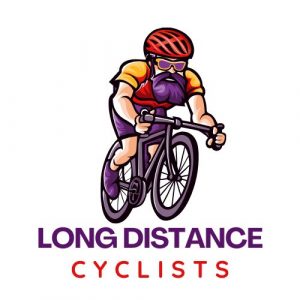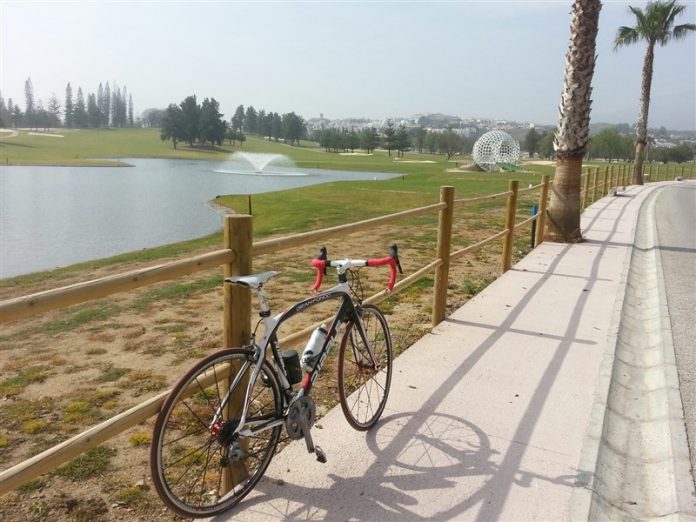Introduction
Cycling has long been more than just a method of transportation—it’s a thriving lifestyle, a growing sport, and for many, a powerful form of personal expression. As interest in outdoor recreation, sustainable travel, and fitness grows, so too does the popularity of long distance cycling. Whether it’s weekend bikepacking trips, multi-day bicycle touring, or participating in gruelling endurance events like Audax rides or ultra races, long-distance cycling offers something unique for every rider.
In this comprehensive guide, we’ll break down what long distance cycling really means, explore the different types, highlight the benefits, provide gear suggestions, and offer tips on getting started. Whether you’re curious about randonneuring or planning your first bike tour, this article is your go-to resource.
What is Long Distance Cycling?
Long distance cycling refers to riding a bicycle over extended distances—well beyond a casual weekend ride or daily commute. These rides typically range from 100km (62 miles) to multi-day or even multi-week adventures covering thousands of kilometers.
While there’s no strict distance that defines “long,” it’s generally accepted that once you’re riding 100km or more in one go, you’re in long-distance territory. Some common categories include:
- 100–200 km rides: Ideal for day trips or Audax events
- Multi-day bike tours: Great for travel, exploration, and endurance
- Ultra-endurance events: Riders cover 400–4000 km with little or no outside support
Long-distance cycling takes many forms—from bike touring and bikepacking, to randonneuring and ultra races—but all share a spirit of adventure, self-reliance, and perseverance.
Different Types of Long Distance Cycling
Bike Touring
Bike touring is the classic form of long-distance cycling, often involving paved roads, scenic routes, and cultural experiences. Cyclists carry their own gear in panniers or handlebar bags, often camping or staying in small accommodations along the way. Touring is ideal for those who want to explore the world slowly, deliberately, and independently.
Typical Features:
- Multi-day rides
- Focus on travel and sightseeing
- Fully loaded bikes with racks and panniers
- Paved roads and national routes
Bikepacking
A more adventurous and modern form of long-distance cycling is bikepacking, which combines off-road cycling with minimalist camping. Instead of racks and panniers, gear is packed into frame bags and saddle bags, allowing for lightweight travel over gravel roads, forest tracks, and remote trails.
Key Characteristics:
- Mixed-terrain or off-road routes
- Lightweight and compact gear
- Emphasis on wilderness and solitude
- Popular among mountain bikers and adventure seekers
Audax / Randonneuring
Randonneuring, also known as Audax, is a time-based endurance cycling event. Riders complete long distances (200 km and up) within a set time limit while remaining self-sufficient. There are checkpoints, but no external support. Events like Paris-Brest-Paris (PBP) or London-Edinburgh-London (LEL) are iconic in this genre.
Highlights:
- Non-competitive but time-limited
- Emphasis on navigation, pacing, and endurance
- Community-driven, with clubs worldwide
- Requires official brevet cards and route verification
Ultra-Endurance Racing
This is where things get intense. Ultra-endurance racing involves riding distances of hundreds or thousands of kilometers—unsupported, often non-stop. Events like the Transcontinental Race or Silk Road Mountain Race challenge even the most experienced riders.
Defining Features:
- Competitive, but self-supported
- Little to no route markings or checkpoints
- High mental and physical demands
- A test of resilience and strategy
Why Do People Ride Long Distances?
Cycling long distances is about more than just covering ground. It offers profound mental, physical, and emotional rewards.
- Challenge and Achievement: Completing a 200 km brevet or crossing a continent on two wheels builds a deep sense of accomplishment.
- Adventure and Exploration: Long-distance routes expose riders to remote landscapes, local cultures, and untamed roads.
- Mental Clarity: Many cyclists report a meditative state during long rides, offering stress relief and mindfulness.
- Community and Culture: Group rides, cycling forums, and endurance events foster a strong sense of camaraderie.
Essential Gear for Long Distance Rides
Choosing the right equipment is crucial for comfort, safety, and performance during extended rides.
Common Bike Types:
| Bike Type | Ideal For | Key Features |
|---|---|---|
| Touring Bike | Road touring | Strong frame, pannier mounts |
| Gravel Bike | Mixed terrain | Wider tires, relaxed geometry |
| Endurance Road Bike | Paved roads | Comfort-oriented geometry |
Must-Have Gear:
- Bike Bags: Frame bags, saddle bags, panniers
- Navigation Tools: GPS computers, paper maps, phone apps (Komoot, RideWithGPS)
- Lighting: High-lumen front and rear lights for night riding
- Clothing: Padded shorts, waterproof jackets, layering for temperature control
- Tools & Spares: Multitool, spare tubes, tyre levers, pump
- Nutrition: Energy bars, electrolytes, compact meals
A comfortable bike fit is non-negotiable. Long hours in the saddle require careful attention to saddle height, bar position, and gear selection.
How to Get Started
If you’re new to long-distance cycling, start with shorter local rides and gradually increase your mileage.
- Build Endurance: Start with 50–60 km and work toward 100 km+.
- Learn to Pack: Experiment with gear placement and weight distribution.
- Scout Routes: Use apps or join local cycling groups.
- Train Smart: Mix long rides with strength training and rest days.
- Join a Community: Online forums and events can offer support and motivation.
Common Challenges and How to Overcome Them
Long-distance cycling isn’t always easy, but most challenges are manageable with preparation.
Typical Issues and Solutions:
- Saddle Discomfort: Invest in a quality saddle and padded shorts; apply chamois cream.
- Fatigue: Hydrate well and maintain consistent fueling.
- Navigation Mistakes: Use multiple navigation sources and pre-plan routes.
- Weather Extremes: Layer wisely and pack for rain, sun, and wind.
Mental fatigue is real. Breaking the ride into manageable sections and having mini-goals helps maintain morale.
Community and Events
Long-distance cyclists are part of a thriving, global community. Whether you’re training for a brevet, joining a bikepacking trip, or racing across continents, there’s a group of like-minded riders out there.
Popular Events:
- Paris-Brest-Paris (PBP)
- Transcontinental Race (TCR)
- Tour Divide
- London-Edinburgh-London (LEL)
- Bikepacking.com Group Rides
Final Thoughts
Long-distance cycling is a deeply rewarding pursuit that combines challenge, discovery, and community. From leisurely touring to audacious ultra-races, it offers a range of experiences for every type of rider. As your endurance builds and horizons widen, you’ll find that long rides don’t just change your fitness—they change your perspective.
Ready to start your long-distance cycling journey?
📬 Sign up for the newsletter for route inspiration and gear reviews
📢 Share this post with fellow cyclists looking to go the distance
Explore more. Ride farther. Discover what’s possible on two wheels
Comment on this article or share your long distance cycling experiences in our comment section below and connect with other endurance riders worldwide.










It’s hard to define what is a long distance. One person’s long ride is another person’s quick spin lol. But it really doesn’t matter if, at the end of the day, you are enjoying riding your bike.